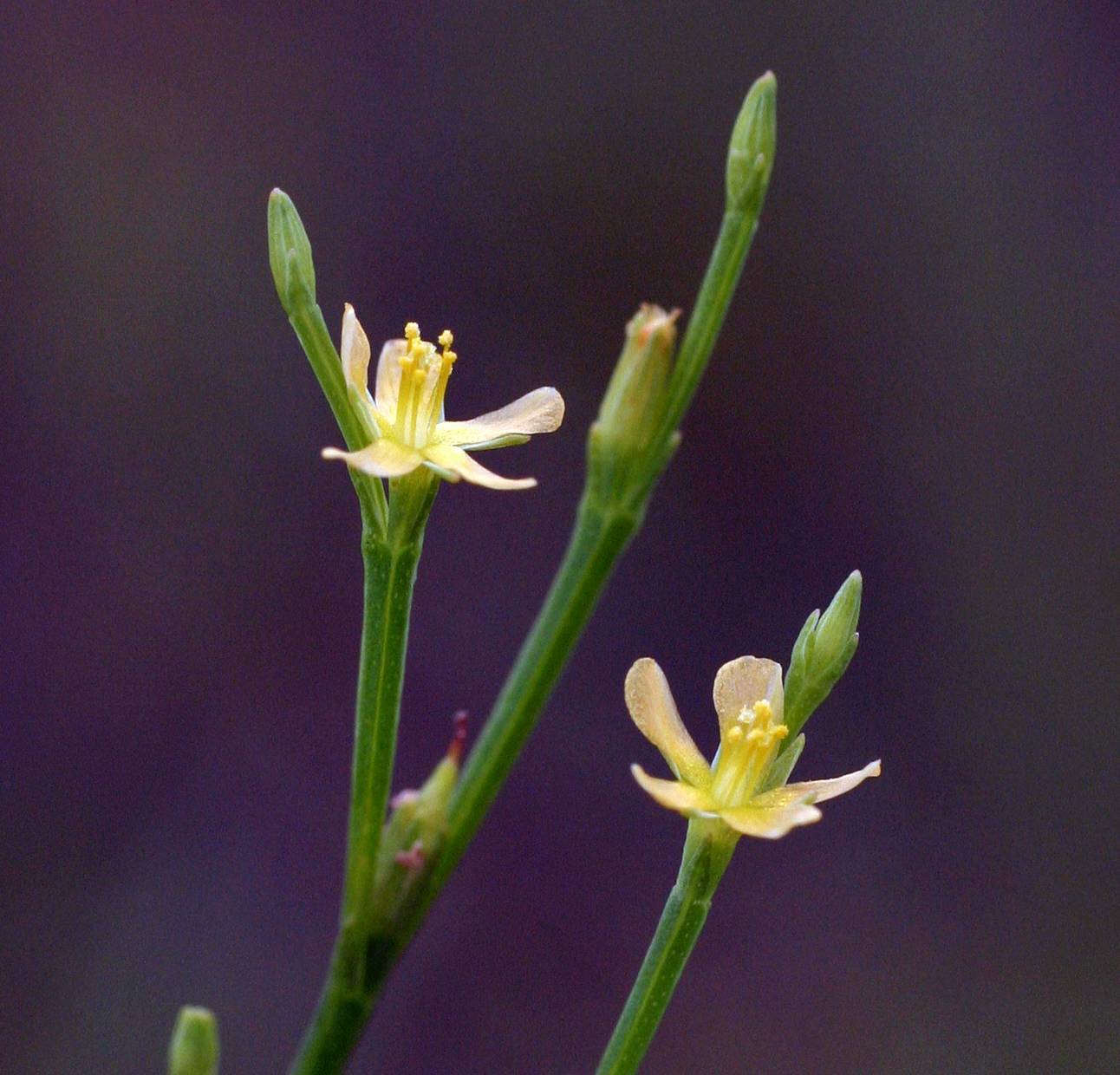|
|
|
|
Family: Hypericaceae
orangegrass
[Sarothra gentianoides L.] |
Annual herb 10 - 50 cm tall Stem: slender, usually with opposite branching (rarely alternate), highly branched, green. Leaves: opposite, 1 - 4 mm long, scale-like, appressed, non-toothed. Flowers: usually borne solitary in leaf axils, nearly stalkless, with lance-shaped to linear sepals 1.5 - 2.5 mm long, five yellow petals 2 - 4 mm long, five to ten stamens, and three styles to 1 mm long. Fruit: a one-chambered capsule, 4 - 7 mm long, narrow conical, containing many pale brown seeds 0.4 - 0.8 mm long. Similar species: Hypericum boreale, Hypericum canadense, Hypericum gentianoides, Hypericum gymnanthum, Hypericum majus, and Hypericum multilum have fewer than 25 stamens per flower. Hypericum boreale can grow as an aquatic or in wet soils. It reaches 10 - 40 cm tall, has stalkless oblong to oval leaves that are less than 2 cm long, and the flowers have leaf-like bracts, 2.5 - 3 mm long petals and eight to fifteen stamens. Hypericum canadense differs because it is 10 cm - 0.6 m tall, the linear to lance-shaped leaves are more than three times as long as wide and single-veined or lightly three-veined, and the flowers have awl-shaped bracts, sepals less than 4.5 mm long, petals 2.5 - 3 mm long, and twelve to 22 stamens. Hypericum gymnanthum is distinguished because the stems are usually unbranched, the leaves are triangular lance-shaped or triangular egg-shaped and rarely more than three times as long as wide, the flowers have awl-shaped bracts and lance-shaped sepals beneath the 3 - 3.5 mm long petals and ten to fourteen stamens, and the capsules are lance-shaped to narrow conical and 3 - 5 mm long. Hypericum majus has lance-shaped leaves that are more than three times as long as wide and five- to seven-veined, and flowers with awl-shaped bracts, 4.5 - 6.5 mm long sepals, 3.5 - 4 mm long petals, and fourteen to 21 stamens. Hypericum multilum differs by its stems that are highly branched near the top, leaves that are rarely more than three times as long as wide, flowers having 1 - 4 mm long awl-shaped bracts and linear-oblong sepals beneath the 1.5 - 2.5 mm long petals and five to sixteen stamens, and capsules that are rounded at the tip and 2 - 3.5 mm long. Flowering: late June to mid September Habitat and ecology: Locally common in sterile soils, disturbed sand, sandy black oak savannas, acid flats, and very acidic pond edges. Occurence in the Chicago region: native Etymology: Hypericum is the Greek name for St. John's Wort, which blooms around St. John's Day (June 24). Gentianoides means gentian-like. Author: The Morton Arboretum Erect annual 1-5 dm, with numerous slender, usually opposite branches; lvs appressed, scale-like, 1-4 mm; fls subsessile, chiefly solitary in the axils; sep lance-linear, 1.5-2.5 mm; pet 2-4 mm; stamens mostly 5-10; styles 3, 1 mm; fr slender-conic, 4-7 mm; seeds 0.4-0.8 mm, pale brown, obscurely areolate; 2n=24. Sterile, especially sandy soil; Me. to Ont. and Minn., s. to Fla. and Tex. June-Sept. (Sarothra g.) Gleason, Henry A. & Cronquist, Arthur J. 1991. Manual of vascular plants of northeastern United States and adjacent Canada. lxxv + 910 pp. ©The New York Botanical Garden. All rights reserved. Used by permission. |



